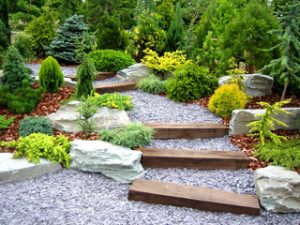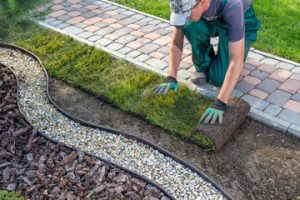Pests in the food industry pose a serious threat to hygiene standards and can damage reputation, quality and safety. Effective pest control is essential to avoid regulatory action and costly clean-up costs.

Preventive methods are economical and environmentally responsible, reducing conditions that promote pest infestations. They include frequent cleaning of areas where pests may live and breed. Visit https://www.benspest.biz/ to learn more.
A wide range of insects provide ecosystem “services” by preying upon, parasitizing, or dispersing pests. These insects, known as natural enemies of the pest, may be predatory animals such as birds and bats; parasitic wasps or flies that live in or on a host insect, killing it from within; or microorganisms like fungi or bacteria, commonly known as pathogens, that attack a host in ways that kill the insect or inhibit its reproduction.
Integrated pest management (IPM) aims to maximize the benefits of beneficial insects while minimizing use of harmful agents. The methods used to do this include crop rotation; physical barriers such as window screens and floating row covers to keep health or nuisance pests out of greenhouses, and plant collars to keep cutworms away from tomato plants; and biological controls such as predators, parasitoids, and pathogens.
In addition, sanitary practices such as careful disposal of weeds that can harbor insect pests; destruction of plant residues such as corn stalks or squash vines, or fallen apples that can attract and overwinter some pests; and light tilling in fall to kill insects overwintering on the soil surface are important for IPM. Biological control of some pests has been successful for millennia, but scientific interest in intentionally introducing organisms to manage unwanted species waned after the invention of synthetic insecticides. However, interest has reemerged as many insect species have become resistant to chemical pesticides.
Rodents
Rodents are a common source of concern for homeowners. Their droppings, urine, saliva, and nesting materials contaminate food, create unsanitary conditions, and can lead to respiratory issues in children and sensitive adults. The dander, fur, and droppings of rodents may also trigger allergies and exacerbate asthma symptoms in affected occupants, especially when they become airborne.
In addition to food contamination, rats and mice can cause extensive damage to personal belongings. Their chewing habits can ruin furniture, clothing, documents, and other materials. Gnaw marks on walls and cabinets are a good indication of an active rodent infestation.
Rodents gain entry into homes through small cracks, holes, and crevices in walls, floors, and foundations. They can even squeeze through openings made for utility lines. Sealing entry points is one of the best preventative measures to thwart rodent invasions.
Rats and mice are a leading cause of food contamination, transmitting a range of diseases through their excrement and urine including Leptospirosis, Salmonellosis, and Hantavirus Pulmonary Syndrome. They also exacerbate allergies and asthma in sensitive individuals, particularly in children.
Rodents are a major health hazard for the health of occupants and their presence can cause anxiety and stress. Addressing rodent infestations promptly and effectively will mitigate these risks. Prevention techniques include habitat modification, sealing entry points, removing clutter, and implementing regular waste removal. Rodent repellents and bait stations are also useful. Choosing humane trapping and relocation methods will minimize harm to rodents while effectively addressing the infestation.
Weeds
Weeds steal valuable water, light and nutrients from crops and deprive desirable plants of needed moisture. They also create favorable conditions for disease and insect pests. As weeds increase in competition, crop yields and quality decline. In addition, climate effects – changes in temperature and precipitation patterns, increased levels of atmospheric CO2 and other factors – influence the incidence, population level and competitiveness of weeds and pest species.
Weed control methods vary. Some are organic or low-cost and high-maintenance but effective and safe for the garden, such as hand-pulling and spraying with vinegar and salt (salt draws the weed’s water, causing it to desiccate and die). Others require chemicals and can be highly toxic to people and pets.
Annual weeds sprout, grow and flower in one growing season before dying and spreading their seeds, while biennial weeds take two years to germinate, bloom and then die. Perennial weeds live for at least two years and can keep coming back unless they are killed or their root systems are dug up and destroyed. They include dandelion, white clover, plantains and wild carrots.
Invasive weeds spread rapidly, smothering native plants and threatening ecosystems and our economy. They are reshaping New Zealand landscapes at an alarming rate. They are a major problem for farmers and a costly drain on councils, DOC funding and local communities. New Zealand has 386 environmental weed species and around 25,000 invasive plants that have yet to reach their full potential for impact.
Fungi
Fungi are just about everywhere: in living organisms, soil, air, water, rock and even nuclear waste sites (where they can absorb high levels of radiation). They reproduce sexually, asexually or by dispersing tiny spores. Spores are a bit like seeds, and when they land on and infect a new host, the fungus is able to expand its territory.
Some fungi, known as entomopathogenic microorganisms, naturally suppress pest populations by infecting and parasitizing them. These fungi are often used in integrated pest management programs to kill or disable arthropod pests. They are also attracting attention as alternatives to chemical insecticides, especially because they do not place as much selective pressure on resistant insect populations.
The fungus Beauveria bassiana is used to treat crops to suppress plant-parasitic nematodes, as well as to increase seed germination and root growth. It can be applied in a wettable powder or liquid suspension. It is effective within a wide range of temperatures and pH, and has the added benefit of inhibiting the spread of cyst and root-knot nematodes.
Other fungi act as natural pesticides by stimulating plants’ immune systems in a way that is both targeted and long-lasting, ensuring that the defenses are up when real pests attack. For example, mycorrhizal fungi are the basis for the “fungus vaccines” used by crops to protect them from diseases caused by pathogenic fungi. These fungal vaccines work through two main mechanisms: stimulation of specific adaptive responses (SAR) and induction of generalized induced systemic resistance (ISR). They are a very important part of plant immunity.
Mosquitoes
Mosquitoes are one of the most troublesome nuisance pests that plague homeowners and businesses. These insects can carry a number of pathogens that are harmful to people, animals and plants. Mosquitoes can transmit pathogens by transferring viruses and parasites from one host to another as they pierce skin to feed on blood.
These insect pests thrive in warm, humid climates and can be active year-round. Increasing global temperatures have impacted mosquito activity by lengthening the season when they breed and develop into adult forms.
The first step to reducing mosquitoes is eliminating sources of water where they can lay eggs. This includes removing flower pots, wading pools and discarded tires where water can collect. Weeds and tall grass also provide an outdoor home for mosquitoes, which can enter homes through unscreened doors and windows.
The next step to controlling mosquitoes is introducing biological control methods. These include invertebrates and fish that prey on mosquito larvae, as well as larvicidal bacteria such as Saccaropolyspora spinosa, Lysinibacillus sphaericus and Bti (Bacillus thuringiensis israelensis). These compounds interfere with intestinal homeostasis to kill mosquito larvae. In addition to these natural controls, insecticides that target adult mosquitoes can be used. However, many commercial products contain chemicals that can harm plants, insects and other beneficial organisms. Choose a pest control professional who uses all-natural insecticides to eliminate mosquitoes from your property. These products are safer for the environment, pets and family members.
Bed Bugs
Bed bugs are every property owner’s worst nightmare. They not only cause itchy, red bites that can leave lasting psychological effects, but they also spread quickly and are difficult to get rid of. That’s why it’s important to contact a NYC bed bug exterminator as soon as you suspect an infestation.
These obligate temporary hematophagous insects feed on warm-blooded animals by using specialized mouthparts to pierce and extract blood from living hosts. They cannot survive without blood, and do not feed on food crumbs or other non-blood substances.
They are known to be resistant to many pest control products, including both chemical and non-chemical treatments. In addition, the increased level of global travel has facilitated the spread of resistant strains and enabled them to survive long periods of starvation during transportation.
Bed bugs have been associated with a variety of health problems, including sleep disturbances, anxiety and stress, psychological distress and posttraumatic stress disorder-like symptoms, fatigue, and depression. Moreover, exposure to the insecticides used for bed bug management can be harmful to both the people applying the products and the occupants of treated areas. Cases of severe acute toxicity reported to FPCC include desquamative interstitial pneumonia1, complete heart block1, and acute tubular necrosis1. Besides, repeated application of sprays can lead to chemical overexposure and intoxication.14. These adverse reactions can be minimized by using Integrated Pest Management approaches and avoiding unnecessary use of sprays.

